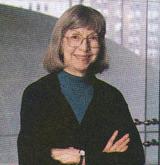Accepting Uncertainty

By Janet J. Asimov
Nowadays, many of us who belong to the species that’s named itself Homo sapiens wonder at the hubris of calling ourselves “wise” in the teeth of much evidence to the contrary.
Homo sapien, condemned to a long infancy dependent on others, seems to spend the rest of its life longing for certainty. We emerge from the womb expecting help from nurturing people who should not die on us. Change evokes suspicion, and should be blamed on somebody. Crops should be good, subways run on time, and planes land properly. Mountains should not explode or waves kill thousands or the ground open up to swallow cities.
Unfortunately, life is uncertain, so people trudge off to religious organizations that proclaim we can count on some things, especially supernatural beings, to stay the same, to be there and take care of us always. Gifted with brains capable of anticipating and sorting through probabilities and doing what can reasonably be done, all too many humans get frightened and leave it up to a deity. I’m glad to say that a few noble humans, in every age, do try to help.
Like it or not, modern science has revealed the irrefutable fact that everything changes, an idea apparently accepted by many ancient philosophers. I include Buddha as a philosopher who said to accept change. This, amazingly, spawned several often helpful ways of thinking, some of them called religions.
One of my favorite ancient guys is Marcus Aurelius who, as translated by a parish priest named Staniforth, said “For all things are born to change and pass away and perish, that others in their turn may come to be.” The second half of the sentence is rationalization, to make the unpleasant pleasanter. I can’t remember any of the three years of Latin I took, so I can’t find out what Marcus really said, but he does seem more accepting of change and uncertainty than the fundamentalists currently trying to return to what they call unchanging values.
I like to believe that as a liberal atheist New Yorker I’ve accepted uncertainty about almost everything, while yearning to believe that apples and bookstores and Lincoln Center won’t go extinct. I certainly don’t mind being uncertain about the Very Big. Does the universe have boundaries? How many universes are there, anyway? And would someone please find out what Dark Matter is? After all, there’s much more of it than of matter, including us.
I’m also comfortable with being uncertain about the teeny-tiny. I dimly remember Heisenberg’s Uncertainty Principle telling me that the important attributes of anything—where something is and how fast it’s going—are doomed to be uncertain because you can’t find one without lousing up the other. This boggles the mind, so it’s helpful when Marcus says “Often picture the changing and re-changing dance of the elements. Visions of this kind purge away the dross of our earth-bound life.”
Then how about life, so far earth-bound? Every day something shakes up the neat labels of certainty we’ve applied to whatever. Feathered dinosaurs! Brainless slime molds that solve mazes! Neanderthal genes in lots of us! Economists who proclaim that growth is necessary, while human population growth destroys the planet!
The American Museum of Natural History’s logo is a human figure standing on the downward curve of one arc while touching with outstretched arms the overarching but separate top arc. I don’t know what the museum intended, but to me it represents us, about midway between the very small and the very big, or between “heaven” and “earth.”
The mayfly has one day of existence. In terms of the future eons of the universe, humans have one day. It’s a pity that in our “in-between” position, we humans can’t accept the transience of all things, including us. Then we might clean up our act while we’re still around to enjoy it.
Janet J. Asimov is a retired psychiatrist and non-retired writer living in New York. She was married to the science fiction author and past American Humanist Association president Isaac Asimov.
